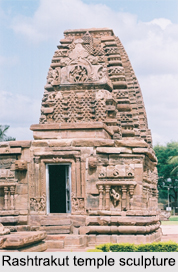 Krishna I ascended to the throne by Govinda II (774 780) C.E. The emperor is identified for his incursion of Vengi and the vanquish of Eastern Chalukya king Vishnuvardhana IV, during the presence of his father Krishna I. He is also for his perseverance to corporeal contentment. Apparently, his younger brother Dhruva undertook the majority of the overpowering as the realm had attained three times the dimension it was during the Krishna I`s reign. The Paithan copper plate writings indicate that the emperor attempted to recoup the lost authority over the empire with the assistance of the neighboring Kings of Kanchi, Vengi and Malwa, although his attempts proved to be futile. Govinda II, the older son Krishna I, bid adieu to the government and the position was restored by the Dhruva Dharavarsha also known as Nirupama, his younger brother.
Krishna I ascended to the throne by Govinda II (774 780) C.E. The emperor is identified for his incursion of Vengi and the vanquish of Eastern Chalukya king Vishnuvardhana IV, during the presence of his father Krishna I. He is also for his perseverance to corporeal contentment. Apparently, his younger brother Dhruva undertook the majority of the overpowering as the realm had attained three times the dimension it was during the Krishna I`s reign. The Paithan copper plate writings indicate that the emperor attempted to recoup the lost authority over the empire with the assistance of the neighboring Kings of Kanchi, Vengi and Malwa, although his attempts proved to be futile. Govinda II, the older son Krishna I, bid adieu to the government and the position was restored by the Dhruva Dharavarsha also known as Nirupama, his younger brother.



















